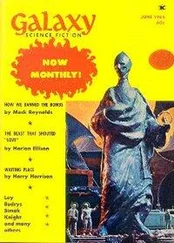Nantucketers had good reason to be superstitious. Their lives were governed by a force of terrifying unpredictability—the sea. Due to a constantly shifting network of shoals, including the Nantucket Bar just off the harbor mouth, the simple act of coming to and from the island was an often harrowing and sometimes catastrophic lesson in seamanship. Particularly in winter, when storms were the most violent, wrecks occurred almost weekly. Buried throughout the island were the corpses of anonymous seamen who had washed up on its wave-thrashed shores. Nantucket, which means “faraway land” in the language of the island’s native inhabitants, the Wampanoag, was a mound of sand eroding into an inexorable ocean, and all its residents, even if they had never left the island, were all too aware of the inhumanity of the sea.
Nantucket’s English settlers, who began arriving in 1659, had been mindful of the sea’s dangers. They had hoped to support themselves not as fishermen but as farmers and sheepherders on this grassy, pond-speckled crescent without wolves. But as the increasing size of the livestock herds, combined with the growing number of farms, threatened to transform the island into a wind-blown wasteland, Nantucketers inevitably looked seaward.
Every fall, hundreds of “right whales” appeared to the south of the island and remained until the early spring. So named because they were “the right whale to kill,” right whales grazed the waters off Nantucket much like seagoing cattle, straining the nutrient-rich surface of the ocean through the bushy plates of baleen in their perpetually grinning mouths. While English settlers at Cape Cod and eastern Long Island had already been hunting right whales for decades, no one on Nantucket had had the courage to pursue the whales in boats. Instead they left the harvesting of whales that washed up onto the shore (known as drift whales) to the Wampanoag.
Around 1690, a group of Nantucketers was standing on a hill overlooking the ocean where some whales were spouting and playing with one another. One of the onlookers nodded toward the whales and the ocean beyond. “There,” he asserted, “is a green pasture where our children’s grandchildren will go for bread.” In fulfillment of his prophecy, a Cape Codder by the name of Ichabod Paddock was soon thereafter lured across Nantucket Sound to instruct the islanders in the art of killing whales.
Their first boats were only twenty feet long, and they launched them from the beaches along the island’s south shore. Typically a whaleboat’s crew was comprised of five Wampanoag oarsmen, with a single white Nantucketer at the steering oar. Once they’d killed the whale, they towed it back to the beach, where they removed the blubber and boiled it into oil. By the beginning of the eighteenth century, English Nantucketers had instituted a system of debt servitude that provided them with a steady supply of Wampanoag labor. Without the island’s native inhabitants, who outnumbered Nantucket’s white population well into the 1720s, the island would never have become a successful whaling port.
In the year 1712, a Captain Hussey, cruising in his little boat for right whales along Nantucket’s south shore, was blown out to sea in a fierce northerly gale. Many miles out, he glimpsed several whales of a type he had never seen before. Unlike a right whale’s vertical spout, this whale’s spout arched forward. In spite of the high winds and rough seas, Hussey managed to harpoon and kill one of the whales, its blood and oil stilling the waves in an almost biblical fashion. This creature, Hussey quickly realized, was a sperm whale, one of which had washed up on the island’s southwest shore only a few years before. Not only was the oil derived from the sperm whale’s blubber far superior to that of the right whale, providing a brighter and cleaner-burning light, but its block-shaped head contained a vast reservoir of even better oil, called spermaceti, that could be simply ladled into an awaiting cask. (It was spermaceti’s resemblance to seminal fluid that gave rise to the sperm whale’s name.) The sperm whale might be faster and more aggressive than the right whale, but it was far more enriching. With no other means of support, Nantucketers dedicated themselves to the single-minded pursuit of the sperm whale, and they soon outstripped their whaling rivals on the mainland and Long Island.
By 1760, the Nantucketers had practically wiped out the local whale population. But no matter—by that point they had enlarged their whaling sloops and equipped them with brick tryworks capable of processing the oil on the open ocean. Now, since it would not need to return to port as often to deliver bulky blubber, their fleet had a far greater range. By the outbreak of the American Revolution, Nantucketers had made it to the verge of the Arctic Circle, to the west coast of Africa, the east coast of South America, and as far south as the Falkland Islands.
In a speech before Parliament in 1775, the British statesman Edmund Burke looked to the island’s inhabitants as the leaders of a new American breed—a “recent people” whose success in whaling had exceeded the collective might of all of Europe. Living on an island that was almost the same distance from the mainland as England was from France, Nantucketers developed a British sense of themselves as a distinct and superior people, privileged citizens of what Ralph Waldo Emerson called the “Nation of Nantucket.”
The Revolution and the War of 1812, when the British navy marauded offshore shipping, proved disastrous to the whale fishery. Fortunately, Nantucketers possessed enough capital and inherent whaling expertise to survive these trials. By 1819, Nantucket was well on its way to reclaiming and, as the whalers ventured into the Pacific, even surpassing its former glory. But the rise of the Pacific sperm-whale fishery had an unfortunate side effect. Instead of voyages that had once averaged about nine months, two- and three-year voyages had become the norm. Never before had the division between Nantucket’s whalemen and their people been so great. Long gone were the days when Nantucketers could watch from shore as the men and boys of the island pursued the whale. Nantucket was now the whaling capital of the world, but there were more than a few islanders who had never even seen a whale.
In the summer of 1819 people were still talking about the time when, nine years earlier, a pod of right whales was spotted to the north of the island. Whaleboats were quickly dispatched. A crowd gathered on shore to watch in fascination as two whales were killed and towed back into the harbor. For the people of Nantucket, it was an epiphany. Here at last were two of the creatures they had heard so much about, creatures upon which their livelihood depended. One of the whales was pulled up onto the wharf, and before the day was out, thousands of people—including, perhaps, the five-year-old Thomas Nickerson—had come to see it. One can only imagine the intensity of the Nantucketers’ curiosity as they peered at the giant creature, and poked and prodded it, and said to themselves, “So this is it.”
Nantucket had created an economic system that no longer depended on the island’s natural resources. The island’s soil had long since been exhausted by overfarming. Nantucket’s large Wampanoag population had been reduced to a handful by epidemics, forcing shipowners to look to the mainland for crew. Whales had almost completely disappeared from local waters. And still the Nantucketers prospered. As one visitor observed, the island had become a “barren sandbank, fertilized with whale-oil only.”
THROUGHOUT the seventeenth century, English Nantucketers resisted all attempts to establish a church on the island, partly because a woman by the name of Mary Coffin Starbuck forbade it. It was said that nothing of consequence was done on Nantucket without Mary’s approval. Mary Coffin and Nathaniel Starbuck had been the first English couple to be married on the island, in 1662, and had established a lucrative outpost for trading with the Wampanoag. Whenever an itinerant minister came to Nantucket looking to establish a congregation, he was firmly rebuffed by Mary Starbuck. Then, in 1702, Mary succumbed to a charismatic Quaker minister named John Richardson. Speaking before a group assembled in the Starbucks’ living room, Richardson succeeded in moving Mary to tears. It was Mary Starbuck’s conversion to Quakerism that established the unique fusion of spirituality and covetousness that would make possible Nantucket’s rise as a whaling port.
Читать дальше












